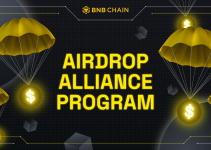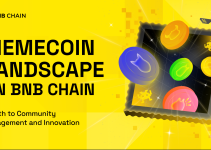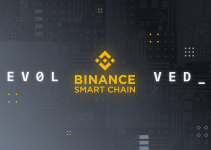
In the Project Spotlight series, we interview projects developing on the Binance Smart Chain (BSC). Previously, we shared interviews with many projects, including Tenderly, BunnyPark, MOBOX, Covalent, BCA Network, and X World Games. In this episode, we want to introduce you to an innovative project that’s doing something you might have never heard of. Let’s chat about Kalata’s synthetic asset protocol.
What are synthetic asset protocols?
Before we get to the interview, we should probably explain what synthetic asset protocols or synths are. If you’re familiar with derivates, you’re already halfway through as synths work on the same principle as regular CeFi derivatives. They’re tied to an underlying asset and follow its price, which means that a synth token will have the same price as the underlying asset, assuming the peg is 1:1.
Synths have a few advantages compared to CeFi derivates, but mainly:
- Borderless: With blockchain, you can transfer synths to anyone anywhere in the world by simply using your crypto wallet. For example on BSC, your synths are transferred in just 3 seconds and around a $0.10 transaction fee.
- Tradable globally: You can move synths from one exchange to another, trade on decentralized exchanges, or swap them for other cryptocurrencies.
Spotlight on Kalata Protocol
IMPORTANT: Please note the following content does not constitute an endorsement or approval of any of the products or services of the project, organization, or individual.

What is your core business? Can you expand on your business strategy to those unfamiliar with your project?
Kalata Protocol (KALA) is a synthetic asset protocol. The first version of Kalata can realize a 1:1 peg to the stock price, allowing us to merge the CeFi and DeFi worlds. It also allows traditional investors to explore DeFi and learn at a lower cost. There is no need for complicated processes. Users just connect their decentralized wallet to Kalata dApp and simply trade global CeFi assets like Tsla.US, BIDU.US, Coin.US, the Dow Jones, ARKK (ARK Innovation ETF), SPCE.US (Virgin Galactic Holdings Inc), PACB.US (Pacific Biosciences of California), etc. This is a very thrilling innovation. We believe that DeFi is not a niche market just for a few. Kalata is the first step traditional finance traders take to enter the DeFi world. Our platform will help more and more users to explore the main form of future finance, making DeFi mainstream.
When was the idea behind Kalata Protocol born, and what led to it?
Ever since the founding of the New York Stock Exchange in 1817, the global security market remained pretty much unchanged for over 200 years. Today, the global securities and financial markets are highly matured, institutionalized, and unfair or inaccessible to billions of people. After the core contributors of the team came into contact with DeFi and spent a long time prudently studying and researching, using their past investment experience, they realized that DeFi and synthetic assets may be the main part of the future in the financial sector. Kalata team all think that DeFi is a topic with a very high learning threshold and too many terms that are obscure and difficult to understand. And the crypto market is a market of high volatility. Thus, a simple and easy way to enter the crypto market is the original thought in our heart when we initiated the Kalata Protocol dApp. Kalata Protocol is a carrier of intrinsic value regardless of all the twists and turns in the future crypto area. Kalata will be the credible and reliable partner of users through the bulls and bears.
Can you tell us more about your team’s background and introduce the core members?
Kalata can synthesize the tokens of real securities. Considering the current uncertainty on the regulatory level in order to achieve smooth progress, safety, and stability of the Kalata Protocol, we chose to be anonymous in the early stage. Later, based on the distributed situation of the team, we will disclose the team information accordingly.
Here is some basic information on core Kalata team members:
A. Jacob, Head of Engineering team at Kalata. Provides technical leadership and responsible for planning and overseeing the development and support of the team. He has vast IT working experience at Kingdee, IBM for many years. His professional life has always involved developing, architecting, team leading, and technical consulting for scaling projects.
B. Aaron works as the Lead Quant Developer with an asset manager under the Blackstone Group, and an Assistant Instructor at Columbia University teaching the FinTech program. Over the years, he has experience both in quantitative signal research, developing systematic trading strategies for different asset classes including cryptos, and in fundamental factors.
C. Leo graduated from the Department of Electronic Engineering in Tsinghua University. He worked at Bytedance as a TikTok product manager. Currently, he is focused on improving financial efficiency through DeFi.
Next, Kalata Protocol will choose DAO governance and fully implement the global community management protocol. Under the general trend of DeFi becoming the mainstream finance in the future, we welcome more people with consensus to join the Kalata community.
What are the main advantages of Kalata Protocol, compared to a similar project from a mainstream financial or DeFi market?
The early version of the Kalata Protocol anchored stock assets. Users held the right to the investment return on corresponding stocks, in addition to dividend rights and voting rights. Kalata is essentially more of mimicry to asset prices. The final result of Dao governance can make Kalata a censorship-resistant asset platform. Thus all important assets in the global mainstream financial market can theoretically become tradable assets on Kalata’s platform. This is because DeFi allows split and combine, just like the lego pieces. Therefore, Kalata’s capability to satisfy the needs for decision-making and efficiency is highly superior to the mainstream financial market. The changes Kalata is able to bring are similar to the convenience and tremendous changes brought by Uinswap.
In addition, the early and long-term supporters of the Kalata Protocol come from the mainstream financial subdivisions such as trust, banking, and securities. They have very professional experience and attainments in the traditional financial field and are not complacent. The long-term supporters of the Kalata Protocol will influence and inspire more traditional financial users. In the early days, Kalata will show its unique professional advantages in terms of the selection of security categories and the risk-return ratio that are impossible to replicate. Therefore, users will grow fonder of Kalata as time passes by.

Can you tell us more about your security strategy? How do you protect your users?
Regarding our contract, we are currently working with Certik, and the audit has already started. After the audit is done, the reports will be immediately available to the public. In the meantime, the code will be open-source, and rewards for discovering bugs will be implemented.
Let’s say I want to start using Kalata straight away. Where do I start?
A: We are currently developing the test net of the Kalata beta version. All readers are welcome to participate in the test by clicking on our website https://testnet.kalata.io/.
It’s very intuitive and simple to use. Even beginners can learn how to use our platform in just a few minutes. If you need help, you can check out our documentation https://docs.kalata.io.
Why did you decide to build on Binance Smart Chain?
At present, Ethereum is currently facing extremely high gas fees and congestion. Thus further adoption on the Binance Smart Chain community is inevitable. We sincerely hope that the Binance Smart Chain community will continue to work hard. BSC’s high performance and low gas fee provide a solid foundation for Kalata Protocol. At the same time, the high TVL of BSC will make Kalata Protocol even more powerful, making Kalata one step closer to its mission and vision.
We have also seen that there are many excellent DeFi projects and teams in the BSC ecosystem. Kalata Protocol is very much looking forward to cooperating and communicating with them to promote the advancement of BSC and DeFi ecosystems together.
What do you hope to see next from the BSC community?
We hope to actively participate in the BSC community. Kalata Protocol provides seamless compatible support and a silky-smooth experience for BNB, BUSD and Binance Chain Wallet. We believe that the BSC community will love our friendly and respectful support for Kalata Protocol products. We hope to learn innovative ideas and gain unique insights on DeFi from the BSC community. We also welcome all resources, cooperation, and support from the BSC community. Kalata Protocol sees highly of projects that boldly try new ideas. Based on the principle of active learning, Kalata hopes to communicate with all projects in the BSC community to explore the infinite possibilities in the future of the DeFi world.
What do you see as the main challenge for the future of DeFi?
There are many problems with the current state of DeFi: high learning threshold, high gas fees, security vulnerabilities, and insufficient user experience. From the perspective of technological development, these problems, if solved, are also huge opportunities for the development of the DeFi industry.
From 2020 to 2021, TVL in the DeFi field has grown rapidly. All of this happened together with the upward trend of the price and volume of cryptocurrencies. Most of the feedback we see from the market is positive. The DeFi industry needs to develop under the test of the bull and bear market. It provides a sufficient time period for Kalata Protocol to grow steadily and healthily. Everything involving the custody of user assets is written in smart contracts. Security and stability are the foundation of Kalata’s long-term development. In terms of code and mechanism security, Kalata never compromises in order to achieve high speed. Therefore, Kalata will continue to introduce specific measures to establish a long-term security mechanism to match the development of the DeFi market. Regulation and compliance from traditional finance are also factors that cannot be ignored. Therefore, a long-term vision through the cycles is a must in the design of the mechanism, function, and compliance of a synthetic asset product in DeFi.
And last, tell us where you see DeFi and BSC in five years?
It is hard to imagine that mobile payment and e-commerce that emerged 10 years ago now have such a high infiltration rate. They are now ubiquitous in middle-developed countries. Traditional finance is a large industry with large numbers of practitioners and groups. They are highly professional. Their trading strategy, trend analysis, quantitative trading techniques, and cross-market arbitrage, each segment of the traditional financial industry is worth learning and admiring. Kalata Protocol believes that more and more intelligent practitioners from the traditional finance industry will join the DeFi trend, which is determined by the incentive effect brought by the DeFi premium dividend. The development of cryptocurrency has shown a very high speed. If we see this optimistically, there will be some unexpected changes within five years. The specific form of it and the changes it will bring to life are indeed difficult to predict. But DeFi will definitely be valued by more and more people. Users will have a smooth experience when doing transactions cross different chains within 2-3 years. With just a few simple steps, you can get access to a variety of global assets that match your risk appetite. This will be the most comfortable investment experience. Kalata Protocol hopes to see the BSC community will grow more powerful and stable. There will be more simple, easy-to-use DeFi applications that can be integrated into the daily life and financial management of ordinary users. To this end, Kalata will contribute unremitting efforts and support to the BSC community.


